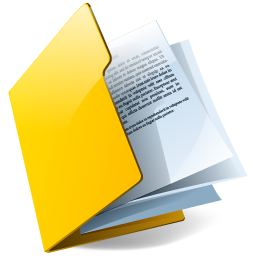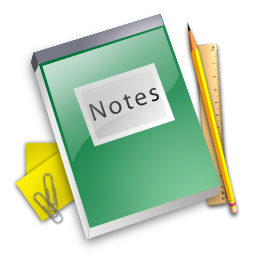Computer Science
CBSE class 12 Computer Science sample papers, quick revision notes, question bank, videos, online tests and practice papers includes Object Oriented Programming with Python, Advances Programming with Python, Object Oriented Programming in C++, Data Structure, Database Management System and SQL, Boolean Algebra, Communication Technologies. The whole syllabus of class 12 Python and class 12 C++ is covered.

CBSE, JEE, NEET, CUET
Question Bank, Mock Tests, Exam Papers
NCERT Solutions, Sample Papers, Notes, Videos

myCBSEguide App
Complete Guide for CBSE Students
NCERT Solutions, NCERT Exemplars, Revison Notes, Free Videos, CBSE Papers, MCQ Tests & more.
Download CBSE class 12 Computer Science study material in PDF format. MyCBSEguide provides solved papers, board question papers, revision notes and NCERT solutions for CBSE class 12 Computer Science. The topics included are Object Oriented Programming with Python, Advances Programming with Python, Object Oriented Programming in C++, Data Structure, Database Management System and SQL, Boolean Algebra, Communication Technologies.
Unit 1: Object Oriented Programming with Python
REVIEW: Python covered In Class-XI
Concept of Object Oriented Programming: Data Hiding, Data Encapsulation, Class and Object, Polymorphism, inheritance, advantages of Object Oriented Programming over earlier programming methodologies,
Classes: Defining classes (attributes, methods), creating instance objects, accessing attributes and methods, using built in class attributes (dict, doc, name, module, bases), Constructor( _ _init()_ _, _ _del()_ _ and _ _ str()_ _) methods in a class, private attributes (limited support), importance of “self” (acts as a pointer to current calling object) operator overloading with methods.
Inheritance:
Concept of base class and derived class: Single, multilevel and multiple inheritance- Overriding methods, using super( ) in derived class to invoke _ _init()_ _ or overridden methods of parent class.
Unit 2: Advance Programming with Python (42 Theory + 36 Practical) Periods
Linear List Manipulation: Sequential allocation, traversal,insertion of an element in a sorted list, deletion of an element from the list, searching (linear, binary), sorting (insertion, selection, bubble).
Stacks (List Implementation): Introduction to stack (LIFO Operations ), operations on stack (PUSH and POP ) and its implementation in python.
Converting expression from infix to postfix notation and evaluation of postfix expression.
Queues (List implementation) – Introduction to Queue(FIFO) , Operations on Queue (INSERT and DELETE) and its implementation in Python.
Data File
Need for non bold for data file, types of data file–text and binary,opening and closing filesopen( ), close( ), access modes (output, input, default), file object, access_modes, reading and writing a file Read(), readline(), readlines(), write(), writeliness file positions (seek(), tell()), renaming and deleting a file.,flush();
Implementation of basic file operations on text and binary file in Python: Creating/writing data into file, reading and displaying data from file, searching for particular data from a file, insertion and deletion of data from an already existing file, modification of data in file.
Error and Exceptions – NameError, IndexError, TypeError, IO Error, ImportError, ValueError, EOFError.
Generator function using Yield.
Unit 3: Databases and SQL (20 Theory + 20 Practical) Periods
Data base Concepts: Introduction to data base concepts and its need.
Relational data model: Concept of domain, tuple, relation, key, primary key, alternate key, candidate key;
Relational algebra : Selection, Projection, Union and Cartesian product;
Structured Query Language:
General Concepts: Advantages of using SQL, Data Definition Language and Data Manipulation Language;
Data Types: NUMBER/DECIMAL, CHARACTER/VARCHAR/VARCHAR2, DATE;
SQL COMMANDS: CREATE TABLE, DROP TABLE, ALTER TABLE, UPDATE ….SET…., INSERT, DELETE; SELECT, DISTINCT, FROM, WHERE, IN, BETWEEN, GROUP BY, HAVING, ORDER BY;
SQL functions: SUM ( ), AVG ( ), COUNT ( ), MAX ( ) AND MIN ( ); Obtaining results (SELECT query) from 2 tables using equi-join, Cartesian product and Union
Note: Implementation of the above mentioned commands could be done on any SQL supported software on one or two tables.
Unit 4: Boolean Algebra (16 Theory + 0 Practical) Periods
Role of Logical Operations in Computing.
Binary-valued Quantities, Boolean Variable, Boolean Constant and Boolean Operators: AND, OR, NOT; Truth Tables; Closure Property, Commutative Law, Associative Law, Identity law, Inverse Law, Principle of Duality, Idempotent Law, Distributive Law, Absorption Law, Involution Law, DeMorgan's Law and their applications;
Obtaining Sum of Product (SOP) and Product of Sum (POS) form the Truth Table, Reducing Boolean Expression (SOP and POS) to its minimal form, Use of Karnaugh Map for minimization of Boolean expressions (up to 4 variables); Application of Boolean Logic: Digital electronic circuit design using basic Logic Gates (NOT, AND, OR, NAND, NOR) Use of Boolean operators (NOT, AND, OR) in SQL SELECT statements Use of Boolean operators (AND, OR) in search engine queries.
Unit 5: Communication Technologies (16 Theory + 3 Practical) Periods
Evolution of Networking: ARPANET, Internet, Interspace Different ways of sending data across the network with reference to switching techniques (Circuit and Packet switching).
Data Communication terminologies: Concept of Channel, Bandwidth (Hz, KHz, MHz) and Data transfer rate (bps, Kbps, Mbps, Gbps, Tbps).
Transmission media: Twisted pair cable, coaxial cable, optical fiber, infrared, radio link, microwave link and satellite link.
Network devices: Modem, RJ45 connector, Ethernet Card, Router, Switch, Gateway, wifi card.
Network Topologies and types: Bus, Star, Tree, PAN, LAN, WAN, MAN.
Network Protocol: TCP/IP, File Transfer Protocol (FTP), PPP, SMTP, POP3 Remote Login (Talent), and Internet Wireless/Mobile Communication protocol such as GSM, CDMA, GPRS, and WLL.
Mobile Telecommunication Technologies : 1G, 2G, 3G and 4G
Electronic mail protocols such as SMTP, POP3
Protocols for Chat and Video Conferencing VOIP
Wireless technologies such as Wi-Fi and WiMax
Network Security Concepts:
Threats and prevention from Viruses, Worms, Trojan horse, Spams Use of Cookies, Protection using Firewall.
India IT Act, Cyber Law, Cyber Crimes, IPR issues, hacking.
Introduction To Web services: WWW, Hyper Text Markup Language (HTML), Extensible Markup Language (XML); Hyper Text Transfer Protocol (HTTP); Domain Names; URL; Website, Web browser, Web Servers; Web Hosting, Web Scripting – Client side (VB Script, Java Script, PHP) and Server side (ASP, JSP, PHP), Web 2.0 (for social networking)
Class XII (Theory) – C++
Unit 1: Object Oriented Programming in C++
REVIEW: C++ covered In Class – XI,
Object Oriented Programming: Concept of Object Oriented Programming – Data hiding, Data encapsulation, Class and Object, Abstract class and Concrete class, Polymorphism (Implementation of polymorphism using Function overloading as an example in C++); Inheritance, Advantages of Object Oriented Programming over earlier programming methodologies,
Implementation of Object Oriented Programming concepts in C++: Definition of a class, Member of a class – Data Members and Member Functions (methods), Using Private and Public visibility modes, default visibility mode (private); Member function definition: inside class definition and outside class definition using scope resolution operator (::); Declaration of objects as instances of a class; accessing members from object (s), Objects as function arguments–pass by value and pass by reference;
Constructor and Destructor: Constructor: special characteristics, declaration and definition of a constructor, default constructor, overloaded constructors, copy constructor, constructor with default arguments;
Destructor: Special Characteristics, declaration and definition of destructor;
Inheritance (Extending Classes): Concept of Inheritances, Base Class, Derived classes, protected visibility mode; Single level inheritance, Multilevel inheritance and Multiple inheritance, Privately derived, publicly derived and Protectedly derived class, accessibility of members from objects and within derived class (es);
Data File Handling: Need for a data file, Types of data files – Text file and Binary file;
Text File: Basic file operations on text file: Creating/Writing text into file, Reading and Manipulation of text from an already existing text File (accessing sequentially).
Binary File: Creation of file, Writing data into file, Searching for required data from file, Appending data to a file, Insertion of data in sorted file, Deletion of data from file, Modification of data in a file; Implementation of above mentioned data file handling in C++;
Components of C++ to be used with file handling:
Header file: fstream.h; ifstream, ofstream, classes;
Opening a text file in in, out, and app modes;
Using cascading operators (>><<) for writing text to the file and reading text from the file; open (), get (), read () put (), write(), getline() and close() functions; Detecting end-of-file (with or without using eof() function), tellg(), tellp(), seekg().seekp();
Pointers: Introduction to Pointer, Declaration and Initialization of Pointer; Dynamic memory allocation/deallocation operators: new, delete; Pointers and Arrays: Array of Pointers, Pointer to an array (1 dimensional array), Function returning a pointer, Reference variables and use of alias; Function call by reference. Pointer to structure: De-reference/Deference operator: *, ->; self referencial structure;
Unit 2: Data Structures
Introduction to data structure- array, stack queues primitive and non-primitive data structure, linear and non-linear structure, static and dynamic data structure.
Arrays: One and two Dimensional arrays: Sequential allocation and address calculation;
One dimensional array: Traversal, Searching (Linear, Binary Search), Insertion of an element in an array, deletion of an element from an array, Sorting (Insertion, Selection, Bubble)
Two-dimensional arrays: Traversal Finding sum/difference of two NxM arrays containing numeric values, Interchanging Row and Column elements in a two dimensional array;
Stack (Array and Linked implementation of Stack):
Introduction to stack (LIFO_Last in First out Operations)
Operations on stack (PUSH and POP) and its Implementation in C++, Converting expressions from INFIX to POSTFIX notation and evaluation of Postfix expression;
Queue: (Array and Linked Implementation)
Introduction to Queue (FIFO – First in First out operations)
Operations on Queue (Insert and Delete and its Implementation in C++, circular queue using array.
Unit 3: Database Management Systema and SQL
Common to both the options. Refer to unit 3 DATABASE AND SQL mentioned in case of Python for further details.
Unit 4: Boolean Algebra
Common to both the options. Refer to unit 4 mentioned in case of Python for further details.
Unit 5: Networking and Open Source Software
Common to both the options. Refer to unit 5 COMMUNICATION TECHNOLOGIES mentioned in case of Python for further details.

myCBSEguide
Trusted by 1 Crore+ Students

Test Generator
Create papers online. It's FREE.

CUET Mock Tests
75,000+ questions to practice only on myCBSEguide app
 myCBSEguide
myCBSEguide





